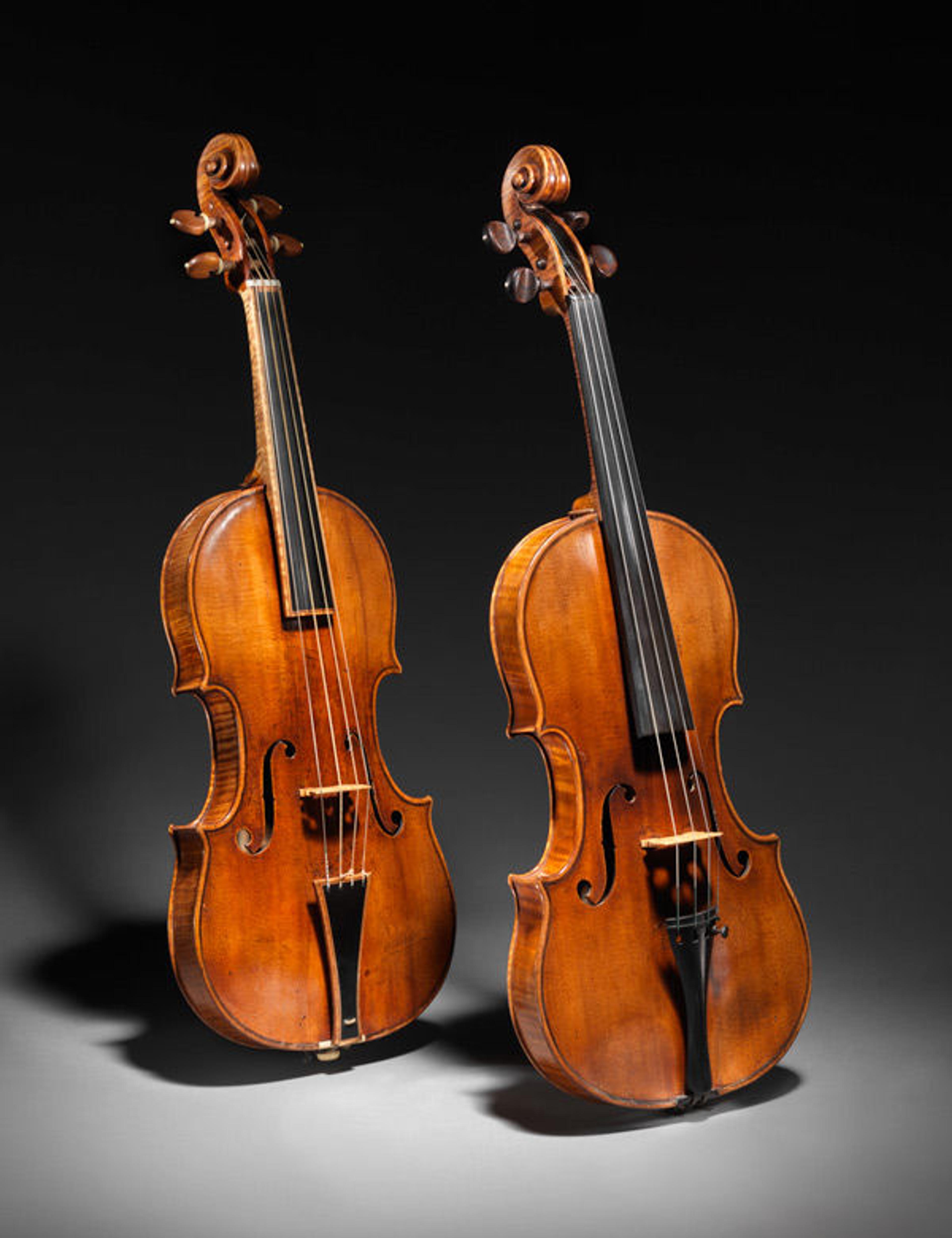Stradivari and the Transformation of Tradition

Left: Antonio Stradivari (Italian, 1644–1737). "The Gould" Violin, 1693. Spruce top, maple sides and back, ebony fingerboard, and gut strings. The Metropolitan Museum of Art, New York, Gift of George Gould, 1955 (55.86 a–c). Right: Antonio Stradivari (Italian, 1644–1737). "The Francesca" Violin, 1694. Spruce top, maple sides and back, ebony fingerboard, and metal strings. The Metropolitan Museum of Art, New York, Bequest of Annie Bolton Matthews Bryant, 1933 (34.86.2)
«In the modern orchestra, wind instruments made before the twentieth century are considered to be outmoded and unusable. Technical developments such as valves and keys were so fundamental that nearly all were replaced by newer models. By contrast, seventeenth- and eighteenth-century string instruments, particularly violins by the famous Cremonese maker Antonio Stradivari, remain sought after by leading performers. Subtle alterations have enabled these violins to stay in use, even as performance spaces grew larger and compositions pushed instruments to their technical capacity, demanding a larger sound and a greater compass of notes.»
A comparison of two Stradivari violins in the Museum's collection, the "Gould" (above left) and the "Francesca" (above right), reveals some of the subtle changes that brought violins in line with modern performance expectations. The Gould is a rare example of a Stradivari violin that has been returned to Baroque configuration, reflecting how it may have left the maker's workshop in 1693, whereas the Francesca displays modifications made over centuries to satisfy changes in performance practice and taste.
The alterations made to the Francesca include the lengthening of the fingerboard to extend the upper range of the instrument; the addition of a chin rest (removed in this photograph); the use of mostly wire strings, rather than those made of gut, to produce a more brilliant tone; and the replacement of internal elements such as the sound post and bass bar with larger ones, which increase the instrument's volume and strengthen its structure. As a result of such modifications, the character of the violin's sound has changed dramatically since Stradivari's lifetime, as can be heard by comparing the two recordings below. Today, a growing number of performers are using violins in Baroque setup and corresponding bows to explore historical soundscapes.
Stradivari experimented with the shape and arching of his violins, and, in 1690, he devised a long and narrow body referred to as his "long pattern." Both the Gould and the Francesca violins are built according to this long-pattern design, and their backs may even have been made from the same tree. By 1700, however, Stradivari abandoned the pattern and reverted to the broader shape typical of his earlier violins.
Follow Jayson on Twitter: @JayKerrDobney
Related Link
Of Note: Happy Birthday to Papa Haydn, Father of the String Quartet
Jayson Dobney
Jayson Dobney is the Frederick P. Rose Curator in Charge in the Department of Musical Instruments.
Follow Jayson on Twitter: @JayKerrDobney
Bradley Strauchen-Scherer
Dr. Bradley Strauchen-Scherer is an associate curator in the Department of Musical Instruments.